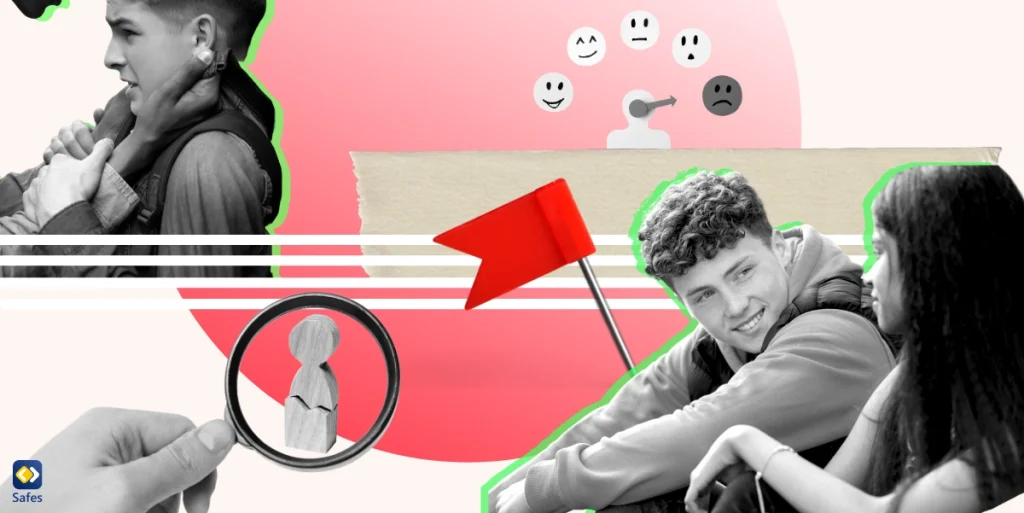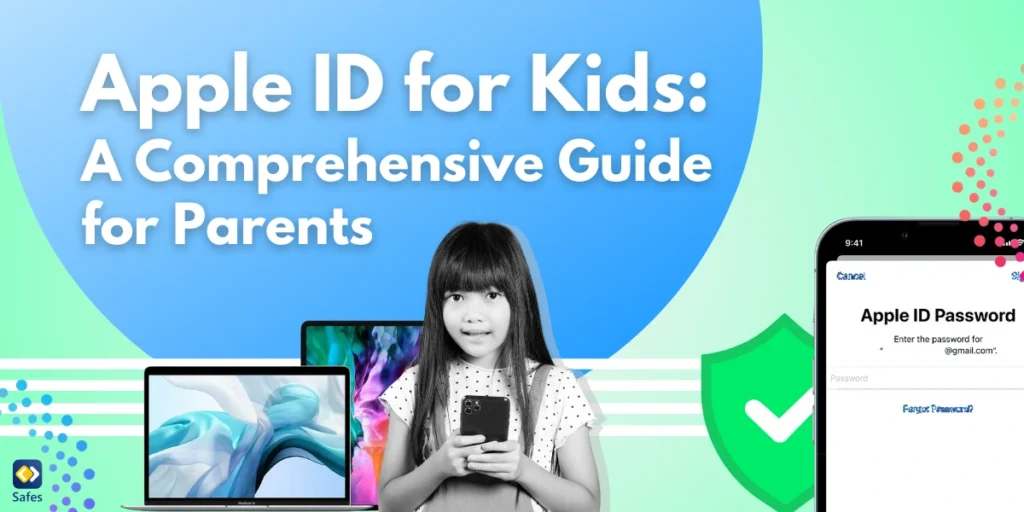Teen dating violence is a serious issue that has emerged in the realm of adolescent interactions. It refers to a pattern of violent behaviors, both physical and psychological, that take place in a romantic relationship between teenagers and adolescents. This kind of violence may occur in different forms, including emotional manipulation, verbal abuse, and cyberbullying.
Download and Start Your Free Trial of the Safes Parental Control App
Parents can play a crucial role in protecting teens against the problems of dating violence. By having open communication with teenagers, modeling respectful behaviors, and providing their teens with online safety tools, they can break the cycle of abuse and nurture healthy relationships in teenagers.
In this blog post, we will explain more about teens’ relationships and provide parents with information on methods to address teenage relationship abuse.
Understanding Teen Dating Violence
Teen dating violence can take different forms: physical, emotional, and digital. These abusive actions can have long-term consequences for teenagers’ health and well-being. Here are the three common forms of dating violence in detail:
Physical Abuse
It involves any form of physical harm or violence. Physical abuse in teen relationships can cause not just physical but also emotional pain.
Emotional Abuse
It refers to activities that are intended to emotionally manipulate, control, or degrade a partner.
Digital Abuse
It includes behaviors like cyberbullying, threatening, or monitoring a partner’s online activities.
Violence in teenage dating has a significant and far-reaching impact on teenagers’ lives. It affects various aspects of their well-being and future. Here are some of its destructive impacts:
- Social isolation and loneliness in teenagers
- Cause emotional trauma and depression
- Affects teenagers’ academic performance
- Teenagers may engage in risky behaviors
The Prevalence of Teen Dating Violence
The prevalence of teen dating violence is a concerning and widespread issue that impacts a substantial number of teenagers. Here are the recent teen dating violence statistics which reflect alarming trends in this issue.
- According to The Youth Risk Behavior Survey, one in ten students who are in grades between 9 to 12, are a victim of physical violence from a romantic partner.
- National Insitute of Justice studies among a sample of American adolescents show that 19.5 percent of teenagers have experienced at least one form of dating violence

Red Flags and Warning Signs
To identify potentially violent relationships and take early action, parents should be able to recognize the warning signs and red flags of teen dating violence. Here are some key indicators to watch out for:
- Unexplained injuries or scratches: Any scars and bruises on the body might be a sign of physical violence.
- Excessive jealousy or possessiveness: If your teen’s partner shows intense jealousy or possessiveness, it may result in controlling behavior and emotional abuse.
- Isolation from friends and family: Your teenager becomes isolated and alone because their partner tries to reduce your teen’s social engagements.
- Loss of interest in hobbies: If your teens lose their interest in hobbies and activities, it may be because of the relationship’s detrimental effects on your teens’ self-esteem.
- Mental health problems and depression: Teenagers who are in abusive relationships are at a higher risk of depression. Mental health problems can be a warning sign.
Ways to Prevent Teen Dating Violence
Here are some strategies for teenage dating violence prevention, aiming to create safe and respectful relationships among teenagers.
Talking to Your Teens
It is essential to talk to your teens about teen dating violence for their safety and well-being. Being open and having nonjudgmental dialogues with them, teaching them about healthy relationship dynamics, and trying to recognize the signs of abuse in teenagers.

Seeking Professional Help
If the mentioned signs and red flags persist for more than two or three weeks, you need to seek professional help. It involves asking for help from qualified people and organizations that focus on supporting teens affected by abusive relationships. This helps teenagers handle the abusive aspects of their relationship. Therapists, counselors, and local support organizations are some of the sources to consider for this issue.
Preventing Teen Dating Violence
Preventing teenage domestic violence requires a combination of education, awareness, therapy, and the development of healthy relationships. Here are some methods to consider:
- Fostering healthy relationship models: Adults including parents and guardians should serve as role models for healthy relationship habits and communication.
- Monitoring digital behavior: Teach teens about online safety, digital privacy, and the potential risks of sharing personal information. Moreover, you can use some tools to monitor their online activities.
- Identify warning signs: Parents should be trained on how to recognize warning signs of abusive behavior in teens and provide appropriate support for it.
Intervention and Safety Planning
Although we mentioned several methods on how to protect teens from the negative consequences of teen dating violence, implementing some of them is not possible or they cannot protect your teens 100%.
We recommend you use the default parental controls on teenagers’ devices as the best solution. You can check our resource pages to get more information:
- Android parental controls
- iPhone parental controls
- Windows parental controls
- MacBook parental controls
Additionally, parents can limit screen time, block all apps immediately, and keep an eye on their teens’ online activities by installing a third-party parental control tool like Safes. You can download it free on iOS and Android.
Why not explore Safes with a 14-day free trial? It’s a great way to see how Safes can help you manage your teen’s digital habits effectively, without any payment.
Conclusion
Overall, teen dating violence requires parents’ immediate attention and preventative actions. We mentioned dating violence examples and we recommended some strategies to protect your teens from the negative effects of this issue. Monitoring teens’ online behavior, communicating with them openly, and making them aware of the potential risks are some of the mentioned methods.
Your Child’s Online Safety Starts Here
Every parent today needs a solution to manage screen time and keep their child safe online.
Without the right tools, digital risks and excessive screen time can impact children's well-being. Safes helps parents set healthy boundaries, monitor activity, and protect kids from online dangers—all with an easy-to-use app.
Take control of your child’s digital world. Learn more about Safes or download the app to start your free trial today!




